

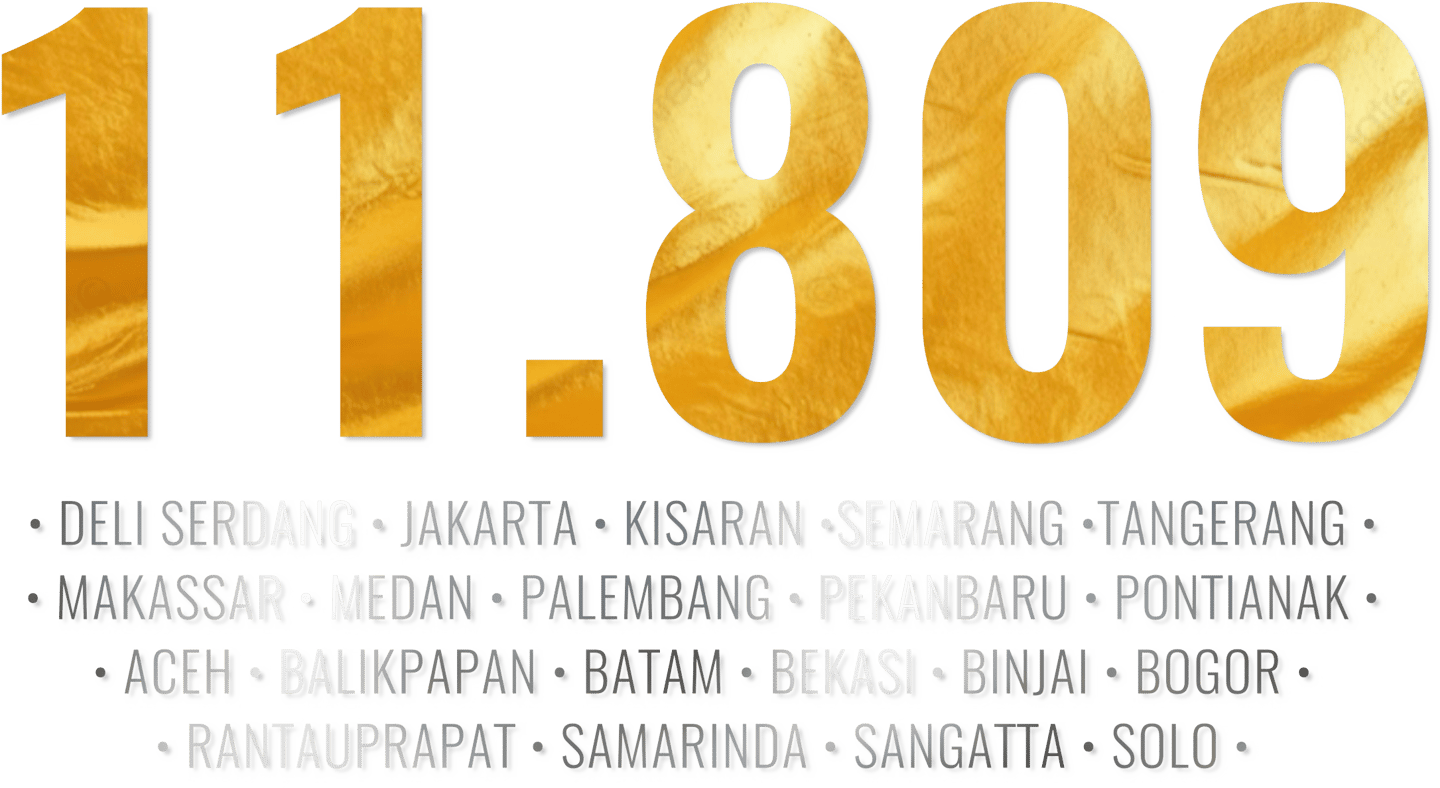

On 9 August 2025, MPM conducted a synchronized four-skills English assessment
(Listening; Speaking; Reading; Writing) with 11,809 students.



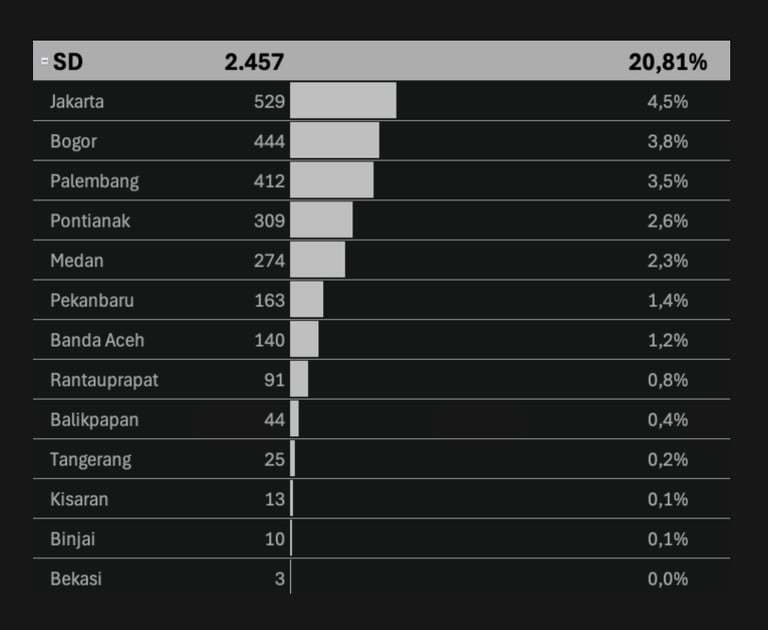


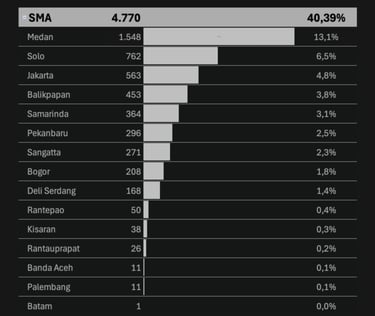


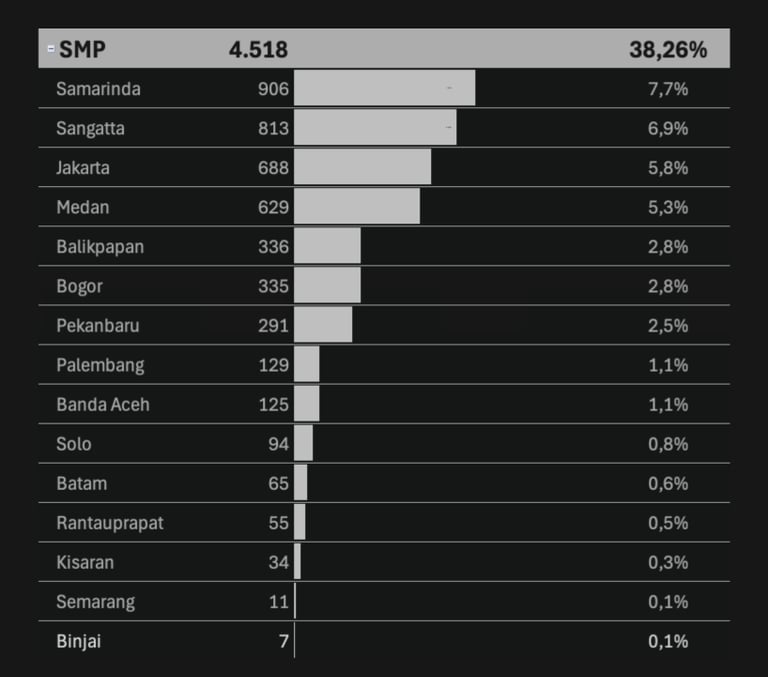

Regional Distribution of Student Participants by Education Level
This dashboard visually presents the geographic breakdown of student participants across multiple cities in Indonesia.
The data covers total counts and percentages for each city, further segmented by education levels
SD (Elementary), SMP (Middle School), SMA (High School), and SMK (Vocational School).
The assessment reached the largest audience among high schools and junior high schools, indicating stronger engagement or outreach at those levels. Medan leads with the highest number of participants (2,457 total, 20,8%), followed by Jakarta (1,780, 15,1%) and Samarinda (1,328, 11,2%). These three cities account for half of all participants.
Total Contribution by School Unit
SMA (Senior High School): 4,770 students (40.39%)
SMP (Junior High School): 4,518 students (38.26%)
SD (Elementary School): 2,457 students (20.81%)
SMK (Vocational School): 64 students (0.54%)
SMP (Junior High School)
1. Samarinda: 906 students (20% of SMP total)
2. Sangatta: 813 students (18% of SMP total)
3. Jakarta: 688 students (15.2% of SMP total)
These three regions contribute over half of all elementary school participants, indicating strong SD-level program presence in urban centers.
Samarinda and Sangatta stand out for SMP, with Jakarta maintaining a strong showing, reflecting active programs in those cities.
Medan is a clear leader in the SMA category, followed by Solo and Jakarta. Medan alone contributes nearly a third of all SMA participants.
SMK participation is extremely concentrated; almost all comes from Samarinda, with minimal involvement elsewhere. This reveals a considerable outreach gap at the vocational level.
SD (Elementary School)
1. Jakarta: 529 students (21.5% of SD total)
2. Bogor: 444 students (18.1% of SD total)
3. Palembang: 412 students (16.8% of SD total)
SMA (Senior High School)
1. Medan: 1,548 students (32.4% of SMA total)
2. Solo: 762 students (16% of SMA total)
3. Jakarta: 563 students (11.8% of SMA total)
Top 3 Regions for Each Unit
SMK (Vocational School)
1. Samarinda: 58 students (90.6% of SMK total)
2. Medan: 6 students (9.4% of SMK total)
3. – (No other region has significant participation in SMK

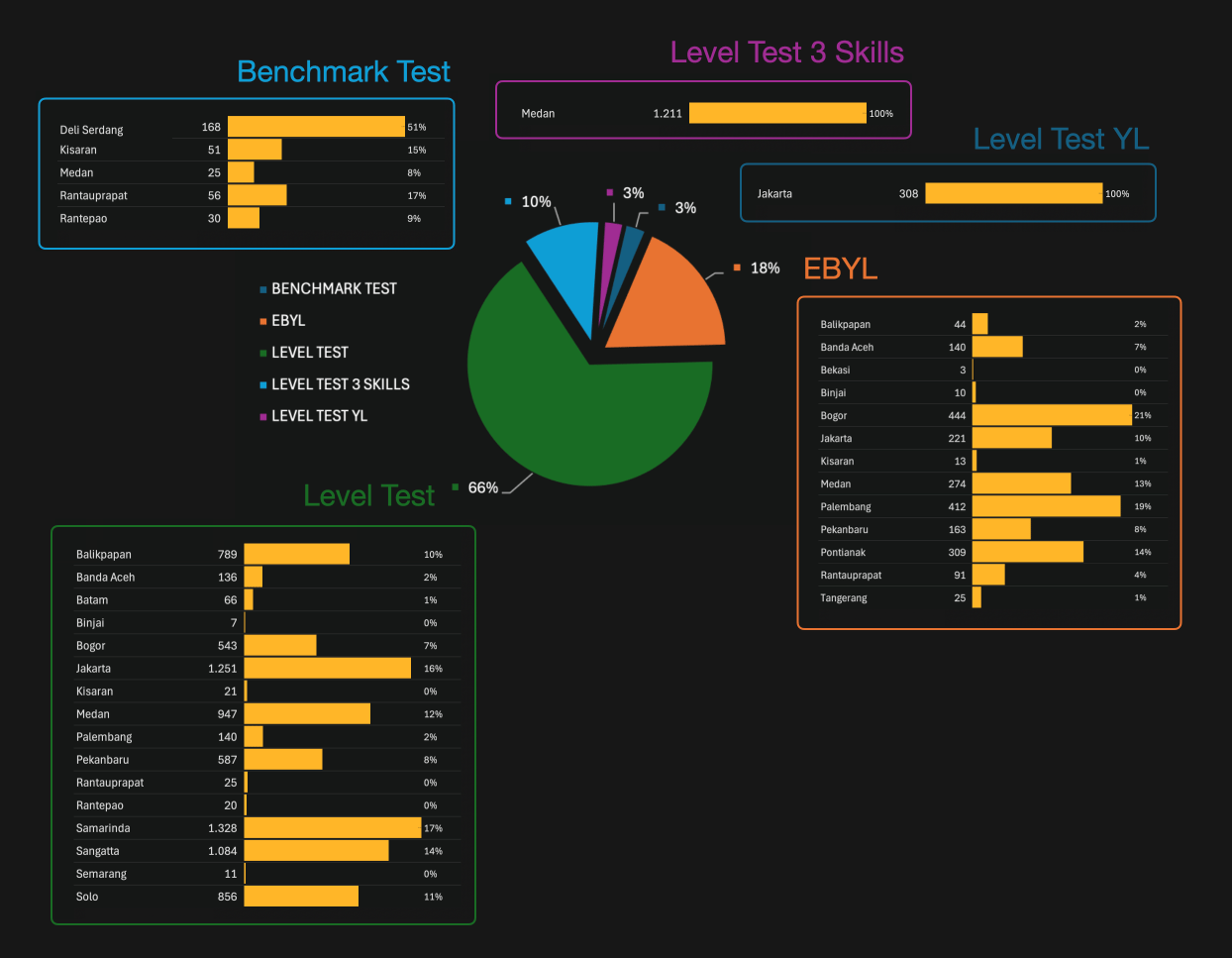

Test Taker Distribution by Test Type
the number of test takers distributed across five different English assessment types:
Analytics & Insights
Level Test (SMP and SMA) dominates, representing nearly two-thirds of total test takers, signaling it as the main assessment tool used.
This implies strong demand for general proficiency mapping and placement services.
EBYL (Early Beginners Young Learners) forms the second-largest group, highlighting a significant focus on young learner assessment programs.
Benchmark Test and specialized Level Tests (3 Skills, for Young Learners) represent niche yet targeted testing, usually region- or city-concentrated (e.g., all Level Test 3 Skills in Medan, Level Test for Young Learners in Jakarta).
Participation is unevenly distributed across regions—some cities (e.g., Jakarta, Samarinda, Palembang) serve as key hubs for specific assessment types, suggesting localized needs/engagement with particular test products.

CEFR & GSE Range Distribution


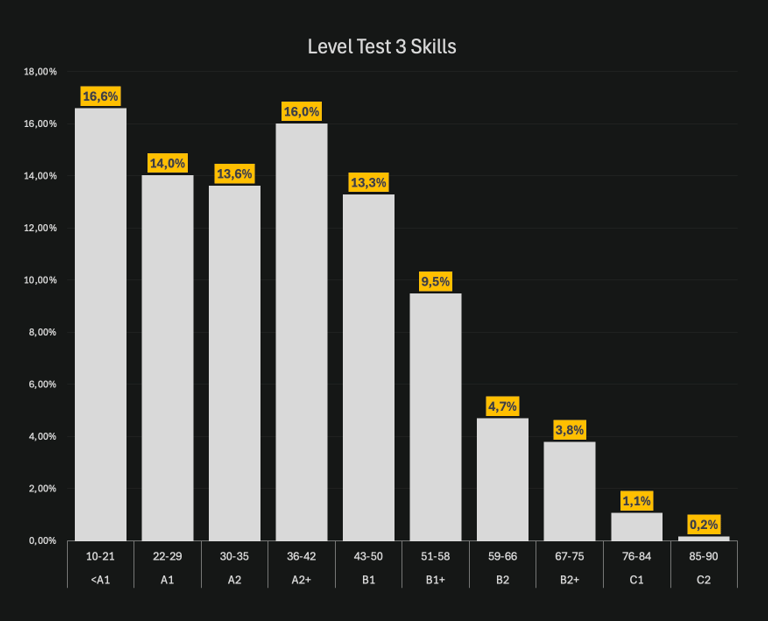



Junior High (SMP) CEFR Distribution: Low Proficiency Dominates: Nearly half are below A1, indicating the majority operate in the lowest proficiency band.
Senior High (SMA) CEFR Distribution: Slightly More Students in Higher Bands Compared to SMP, but still a large majority remain in A2 level or below.




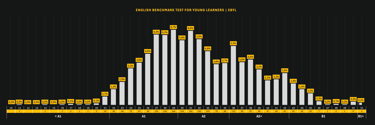
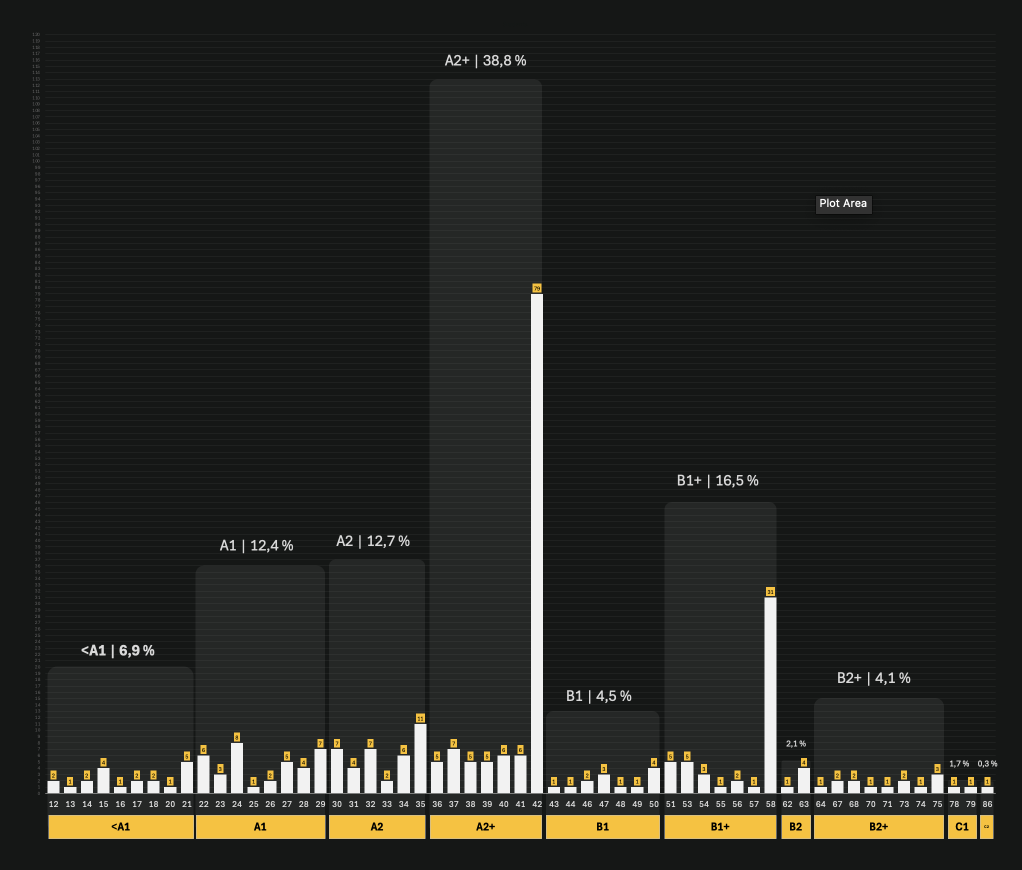


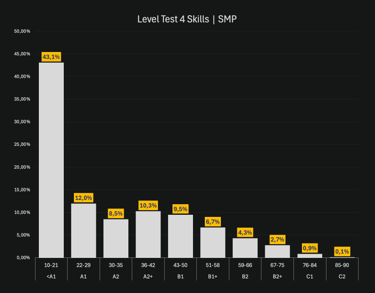



Junior High (SMP) CEFR Distribution: Low Proficiency Dominates: Nearly half are below A1, indicating the majority operate in the lowest proficiency band.
Senior High (SMA) CEFR Distribution: Slightly More Students in Higher Bands Compared to SMP, but still a large majority remain in A2 level or below.
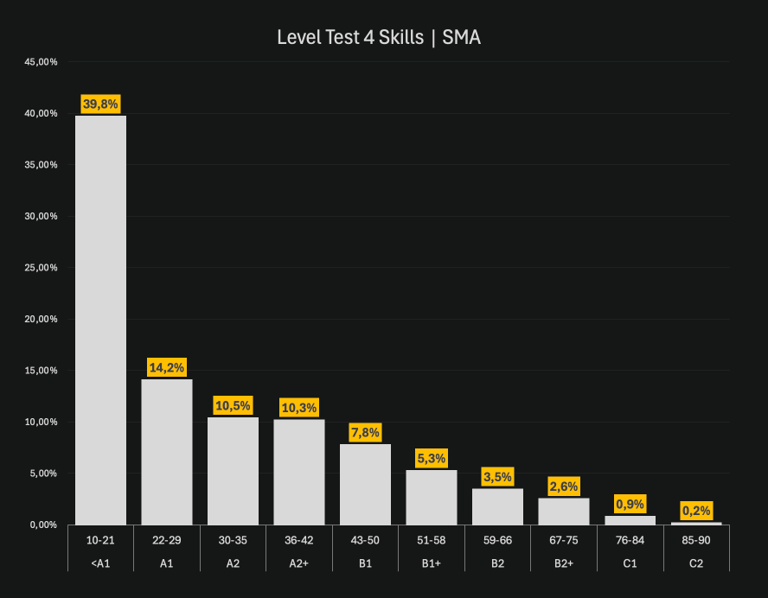

Junior High (SMP) CEFR Distribution: Low Proficiency Dominates: Nearly half are below A1, indicating the majority operate in the lowest proficiency band.
Senior High (SMA) CEFR Distribution: Slightly More Students in Higher Bands Compared to SMP, but still a large majority remain in A2 level or below.
Junior High (SMP) CEFR Distribution: Low Proficiency Dominates: Nearly half are below A1, indicating the majority operate in the lowest proficiency band.
Senior High (SMA) CEFR Distribution: Slightly More Students in Higher Bands Compared to SMP, but still a large majority remain in A2 level or below.
Junior High (SMP) CEFR Distribution: Low Proficiency Dominates: Nearly half are below A1, indicating the majority operate in the lowest proficiency band.
Senior High (SMA) CEFR Distribution: Slightly More Students in Higher Bands Compared to SMP, but still a large majority remain in A2 level or below.
Junior High (SMP) CEFR Distribution: Low Proficiency Dominates: Nearly half are below A1, indicating the majority operate in the lowest proficiency band.
Senior High (SMA) CEFR Distribution: Slightly More Students in Higher Bands Compared to SMP, but still a large majority remain in A2 level or below.
Junior High (SMP) CEFR Distribution: Low Proficiency Dominates: Nearly half are below A1, indicating the majority operate in the lowest proficiency band.
Senior High (SMA) CEFR Distribution: Slightly More Students in Higher Bands Compared to SMP, but still a large majority remain in A2 level or below.
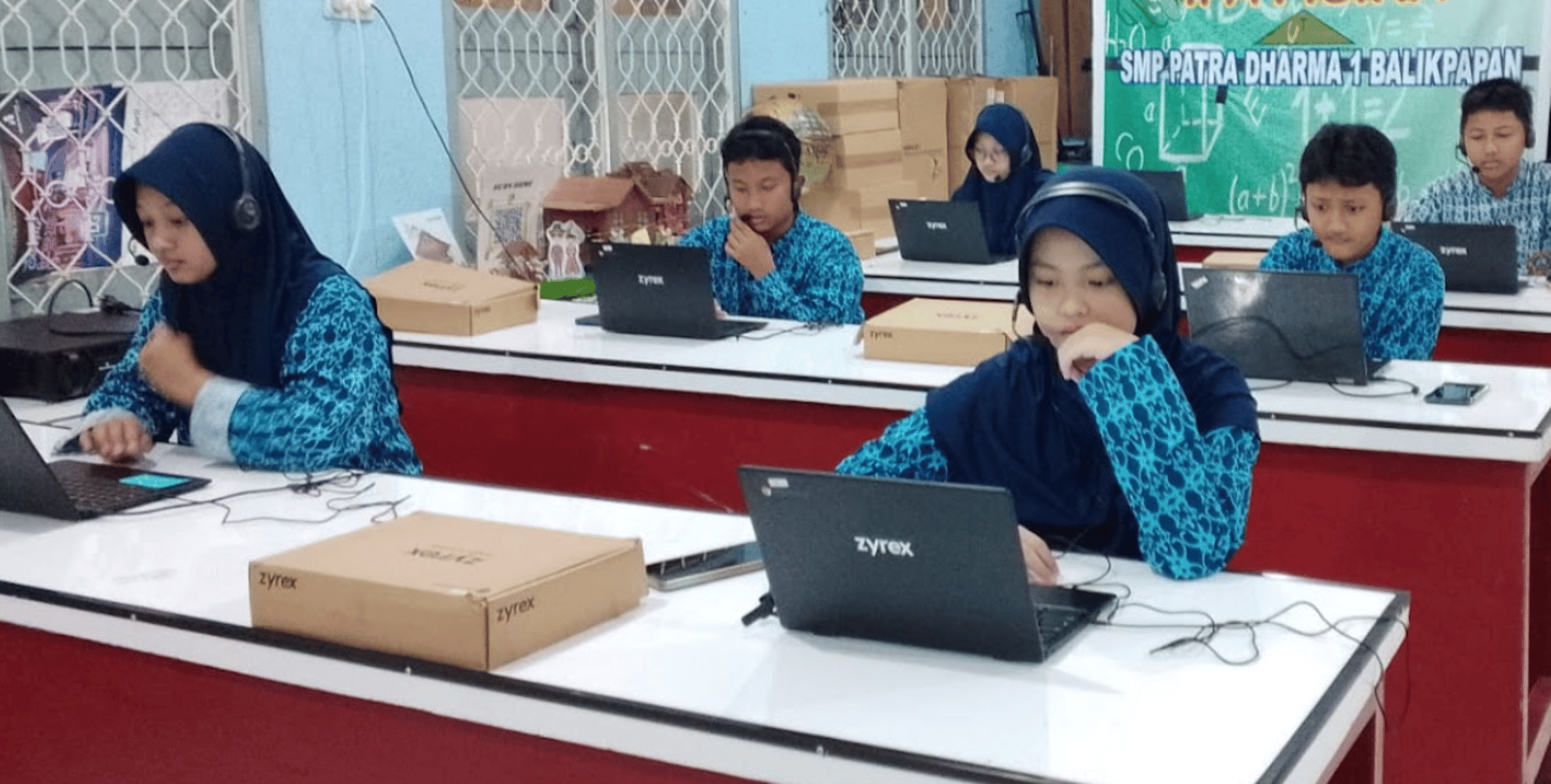
Platform ini sangat membantu saya memahami perkembangan kemampuan bahasa Inggris saya dengan jelas dan terperinci.
★★★★★









